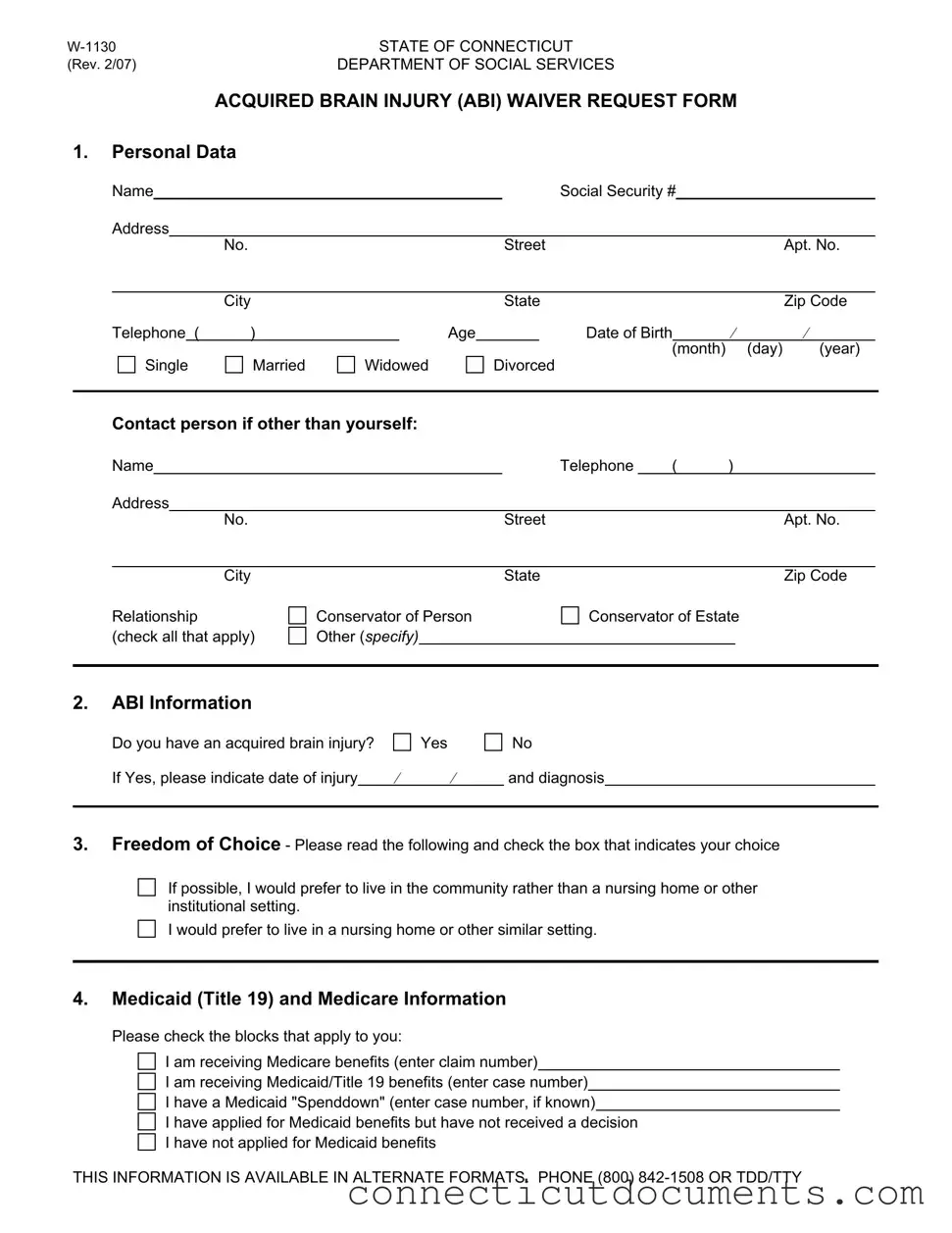What is the Connecticut W 1130 form?
The Connecticut W 1130 form is a request form for the Acquired Brain Injury (ABI) Waiver. It is used by individuals seeking assistance through the Department of Social Services in Connecticut. This form collects personal information, details about the individual's brain injury, and financial data to determine eligibility for services.
Who should fill out the W 1130 form?
Individuals who have an acquired brain injury and wish to apply for the ABI Waiver should fill out this form. If the applicant is unable to complete the form themselves, a conservator or other representative can assist in the process.
What information is required on the form?
The form requires personal data such as name, address, and Social Security number. It also asks for details about the acquired brain injury, including the date of injury and diagnosis. Additionally, applicants must provide information regarding their financial situation, including monthly income and total assets.
Is there a specific way to submit the W 1130 form?
Yes, the completed W 1130 form should be mailed to the Department of Social Services at the address provided on the form. Make sure to send it to the correct attention line for Social Work Services on the 10th Floor.
What if I need assistance completing the form?
If you need help with the form, you can contact the Department of Social Services for guidance. They can provide assistance in understanding the questions and the information required. Additionally, a family member or conservator can help fill out the form.
What happens after I submit the form?
After submitting the W 1130 form, the Department of Social Services will review your application. They may contact you for additional information or clarification. Once the review is complete, you will receive a decision regarding your eligibility for the ABI Waiver services.
Can I apply for Medicaid benefits at the same time?
Yes, the W 1130 form includes sections to indicate if you are receiving Medicaid or have applied for it. You can provide your Medicaid information on the form, which may help streamline your application for the ABI Waiver.
What if I have questions about my Medicaid or Medicare status?
If you have questions regarding your Medicaid or Medicare status, it is best to contact the respective agencies directly. They can provide the most accurate and up-to-date information regarding your benefits and any requirements you may need to fulfill.
